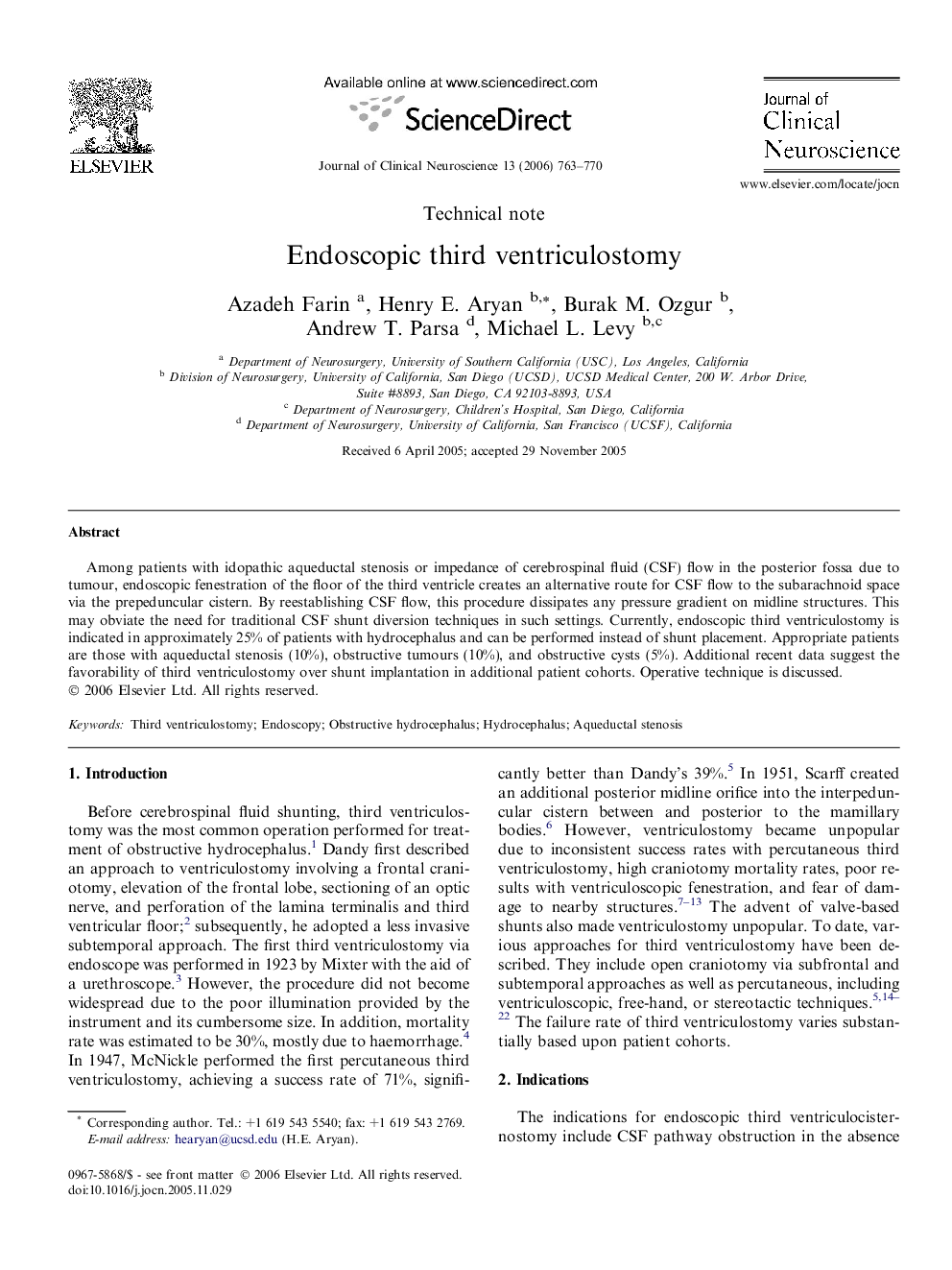| Article ID | Journal | Published Year | Pages | File Type |
|---|---|---|---|---|
| 3063768 | Journal of Clinical Neuroscience | 2006 | 8 Pages |
Among patients with idopathic aqueductal stenosis or impedance of cerebrospinal fluid (CSF) flow in the posterior fossa due to tumour, endoscopic fenestration of the floor of the third ventricle creates an alternative route for CSF flow to the subarachnoid space via the prepeduncular cistern. By reestablishing CSF flow, this procedure dissipates any pressure gradient on midline structures. This may obviate the need for traditional CSF shunt diversion techniques in such settings. Currently, endoscopic third ventriculostomy is indicated in approximately 25% of patients with hydrocephalus and can be performed instead of shunt placement. Appropriate patients are those with aqueductal stenosis (10%), obstructive tumours (10%), and obstructive cysts (5%). Additional recent data suggest the favorability of third ventriculostomy over shunt implantation in additional patient cohorts. Operative technique is discussed.
